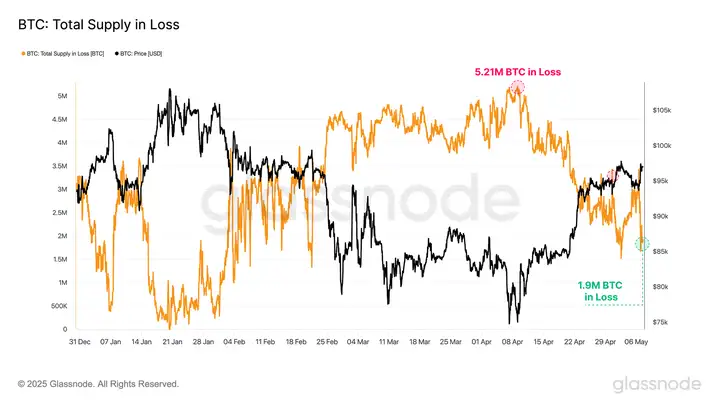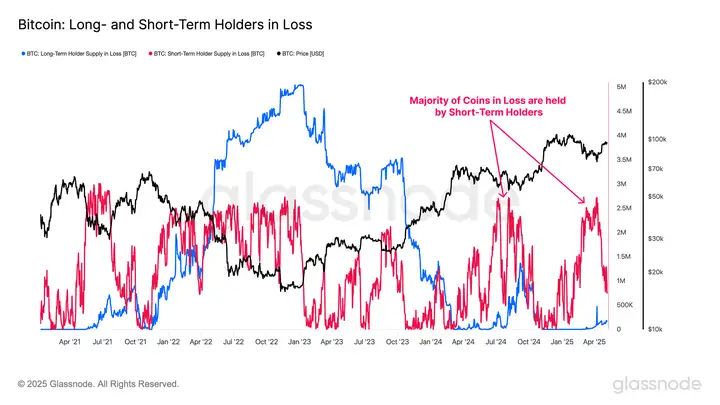BTC is about to hit 100,000, what is driving this wave of growth? Is it Trump's high-profile trade declaration, the Federal Reserve's monetary policy direction, or Wall Street giants' accelerated embrace of crypto assets?
VX: TZ7971
Trump's Trade Gamble: A Market Sentiment Igniter
On May 8th, Trump announced he would release a heavyweight statement the next morning in the Oval Office regarding a trade agreement with "a highly respected great power". The New York Times subsequently revealed the mystery: the agreement was with the United Kingdom. This news acted like a spark, quickly igniting market speculation. Trump's trade policy has always been a global financial market bellwether, and this was no exception. He also previewed that he would announce a "very significant message" before his Middle East trip next week, further teasing investors' nerves.
Trump's trade moves have caused waves in 2025. In early April, when he announced 145% tariffs on China, BTC prices immediately dropped to $77,730, and global stock markets experienced the most intense volatility since 2020. However, on April 10th, he unexpectedly suspended some tariffs for 90 days, and market sentiment quickly reversed, with BTC surging 7% in a single day to $82,350. Now, the trade agreement with the UK is seen as a potential positive, possibly alleviating global trade and booassets' attractiveness. This optimistic sentiment quickly spread to the crypto domain, with capital inflows following.
Rate Cut Expectations Catalyst3the same day, Federal Reserve Chairman Jerome Powell dropped a heavyweight signal at the press conference: monetary policy prospects might include rate cuts, but the specific path would be anchored to economic data. He downplayed GDP fluctuations, emphasizing the Fed would remain flexible. This statement injected warmth into the market, as rate cuts are often aswind's spring.
In 2025, the Fed's policy has been particularly significant for BTC. On April 23rd, Trump denied rumors of firing Powell, and the market breathed a sigh of relief, and BTC rebounded immediately. However, the tariff impact in early April had driven BTC to a low of $81,500, highlighting highlighting the macro environment's pull on the. cut expectationsation indirectly fuels Bby reducing market liquidity costs, weakening the dollar's attractiveness, and enhancing inflation hedging demand.
But Powell's cautious wording also laid hidden hints. He clearly stateded that policy would closely track economic data, and rate cuts might be delayed if inflation or employment data exceeded expectations. The market is is in a delicate balance, and subtle external variable changes might trigger fluctuations.
Institutional Fund Flow
On May 1st st Stanley announced plans to launch crypto trading services on E* 2, marking a new phase of Wall Street's digital asset embrace. Previously, its wealthy clients could invest in crypto assets through BTC ETFs and futures, with advisors permitted to promote ETFs since August 2024. Charles Schwab and other institutions followed suit with similar service plans. These moves pushed BTC to briefly break $97,000 on May 2.
Institutional fund inflows are reshaping market ecology. US spot BTC ETFs absorbed $4.6 billion in the past two weeks, with assets under management approaching the historical peak of 1.171 million BTC. In contrast, continuous outflows from March to April had previously pressured the market, highlighting institutional funds' sensitivity to macro environments. Institutional participation not only enhances market liquidity but also paves the way for BTC's mainstreaming. However, in mid-April, affected by tariff waves, BTC ETFs experienced consecutive 7-day outflows of about $1 million1 , million, reminding investors that institutional funds are notolithic p>TCB's Capital (TCap) rose to a historical high of $88.9 billion, growing 2.1% in the past month. This indicator measures cumulative net capital inflows, reflecting strong capital injection momentum. The Profit/further shows daily net capital inexceeding $1 in recent weeks indicating buyers' willwillingness to absorb sell orders at current prices with robust demand. In comparison, realized losses only account for% of total transaction volume, suggesting high-buyers are observing, with market sentiment leaning optimistic.

Secondly, price recoveryhas significantly alleviated investor pressures. At the recent low point of $74,, over 5 million,million in losses. As prices recovered to $97,000, around 3 million Breturned to profitability, especially Short-Term Holders' (STH) investment portfolios being repaired.
Unrealized Loss indicators show Short-Term Holders' financial pressures dropped from +2σ highs during August's Yen arbitrage trade collapse and 2025 early market downturn to neutral levels. This improvement directly reflects in trading behaviors: Short-Term Holders' profitable trade proportions surged, losses signaling market turning point from loss-profit dominance.

Additionally, Long-Term Holders' (LTH) behaviors are worth noting. Since the low point, point ,000's holding time exceeded 155 days, showing long long-term investors in prices. Realized Supply Density indicators further further reveals massive Bsimilar cost basis BTC concentrated around current prices. These coins were mainly accumulated between December 2024 and February 2025, having withstood recent low points without being sold. This supply's existence increases market price fluctuation sensitivity, with minor changes potentially triggering massive trades.

Low volatilityality often signals high volatility periods, and combined with high on-chain supply density, the market might be brewing a storm.
BTC's growth is in full swing, but the stands at a deldeldelicate critical point. Prices hover near Short-Term Holders' cost basis (around $95,000), a historical litmus test for growth. If this support holds, the market might further advance; if breached, recent momentum might be hindered.
External catalysts—like Trump's Middle East trip or the Federal Reserve's economic economic data interpretation—might become sparks igniting volatility.






